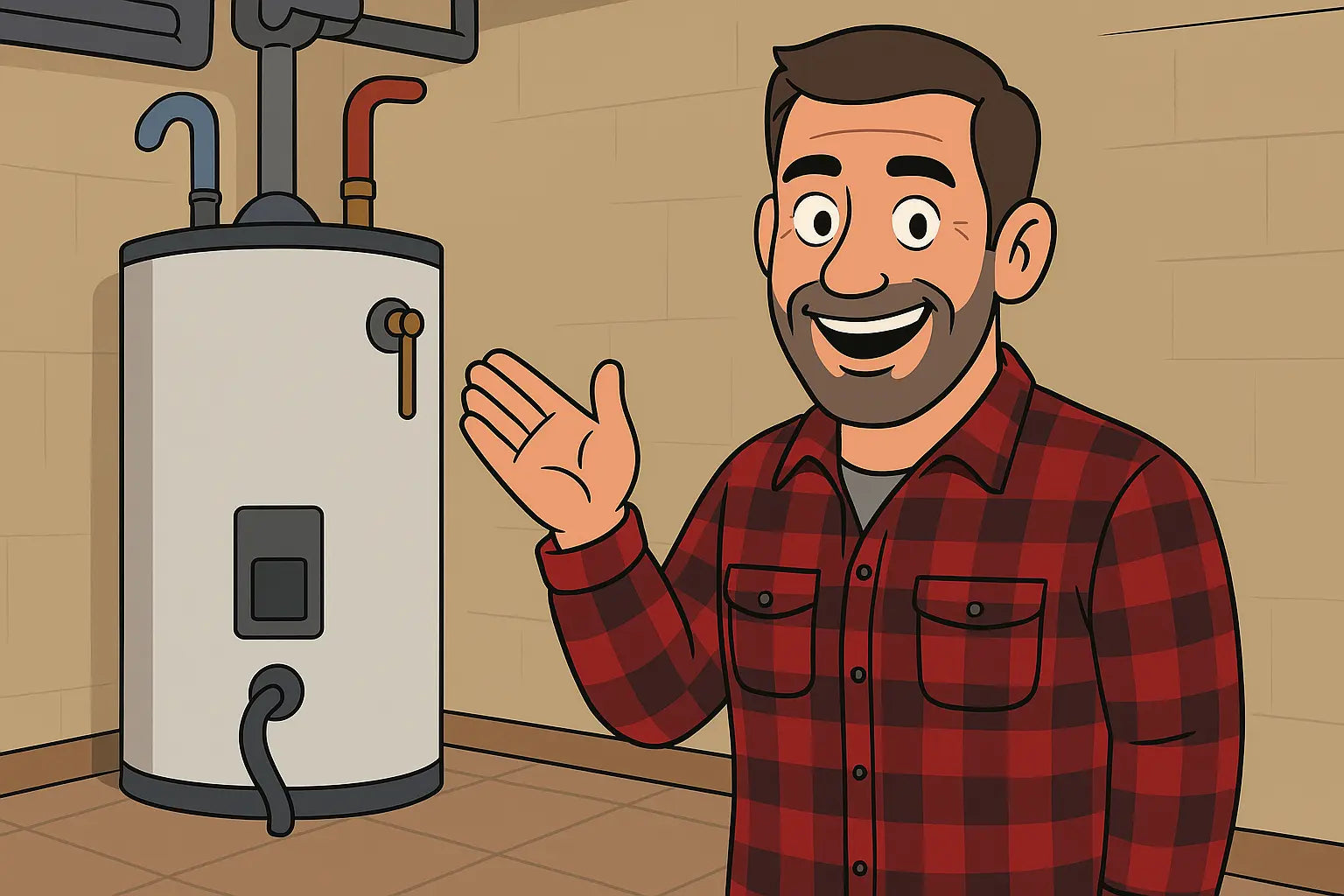What’s Up with That Red Button?
Hey folks, Mike Sanders here. If you're poking at that little red button on your water heater more often than your garage door remote, we've got a problem. That reset button—officially called the "high-limit switch"—is like your water heater’s last line of defense. When things start to get a little too toasty, it trips to keep your home (and your wallet) safe.
And yep, if it keeps tripping, something deeper is going on. Let’s break it down nice and simple.
What the Reset Button Actually Does
Most folks think the reset button just restarts the water heater like flipping a breaker or rebooting your phone. But it’s more like an emergency shutoff. It trips when the water temperature goes above 180°F—way hotter than you ever need.
That’s not a bug, it’s a built-in safety feature.
Why? Because water that hot can cause severe scalds in seconds. According to the Consumer Product Safety Commission, tap water over 130°F can cause third-degree burns in under 30 seconds.
So if the reset button is popping out, it’s likely:
-
The water heater is overheating
-
One or both heating elements are faulty
-
The thermostat is stuck or miscalibrated
-
Wiring is shorting out or grounding improperly
The Top Reasons It Keeps Tripping (And What to Do)
Let’s get into the common culprits.
1. Faulty Thermostat
The thermostat controls the heating elements and tells them when to shut off. If it’s stuck or out of whack, it might keep heating water past safe levels.
Fix it:
You can use a multimeter to test it—Service Champion’s step-by-step guide makes it easy to follow, even if you're not an electrician.
2. Broken Heating Element
Sometimes the heating element shorts out, causing it to stay on full-blast even when the water’s already hot.
Fix it:
Replace the bad element.
3. Wiring Issues or Loose Connections
Worn-out wires or loose terminals can lead to shorts, especially in older heaters. Moisture can sneak in too, which is never a good mix with electricity.
Fix it:
Check connections (with the power off, of course). If you’re not sure, this one’s a good time to call in a pro.
4. Sediment Buildup
If your tank hasn’t been flushed in a while (or ever—be honest), mineral buildup can trap heat and confuse the thermostat.
Fix it:
Flush your water heater once a year. Energy.gov has a great write-up on routine maintenance steps.
When You Should Not Hit That Button
Look—I get it. The water's cold, and you want it back now. But don’t just hit that reset button over and over without knowing why it tripped in the first place. That’s like turning the smoke alarm off without checking for fire.
If you’ve had to hit that thing more than once in a week, it's time to roll up your sleeves (or call in a tech) and dig deeper.
Safety First: Power Off Before You Poke Around
Your electric water heater is wired directly to your home’s electrical system. You’re dealing with 240 volts in there, which is no joke. Always shut off power at the breaker before removing any panels or messing with wiring.
If you’re not totally comfortable with electrical work, there’s no shame in calling someone who is. Better safe than barbequed.
Prevent It from Happening Again
Regular maintenance goes a long way. Here's my short list for keeping that reset button from going wild:
-
Flush the tank once a year to clear out sediment
-
Test your thermostat and heating elements every few years
-
Inspect wiring for signs of wear or corrosion
-
Keep an eye on the temperature setting—120°F is the sweet spot
You can also install a smart thermostat for water heaters that’ll help you monitor things remotely and keep temps consistent.
Know When It’s Time for a New Unit
If your water heater is 10+ years old and it’s tripping the reset every month, it may be time to retire the ol’ tank. Constant issues with overheating or element failure can add up fast—and so can your energy bill.
If you're shopping for a high-quality replacement, check out The Furnace Outlet’s 50–60 Gallon Electric Water Heater collection. It’s packed with reliable units that keep things hot without getting too hot.
Final Thoughts from Mike
Look, nobody wants to stand there freezing in the shower while punching a red button like it’s going to solve everything. The reset button is your water heater’s way of saying, “Hey, something’s wrong.”
So listen to it. A little DIY detective work can go a long way, and when in doubt—call in a pro.
Thanks for sticking with me, neighbor. And if you're in the market for a safer, more reliable 50–60 gallon heater that keeps your showers steamy and your family safe, you know where to start:
👉 The Furnace Outlet’s top-rated models
Need more installation and troubleshooting tips for your 50-60 gallon water heater? Visit my guide right here!
Until next time,
—Mike, your cool HVAC neighbor







